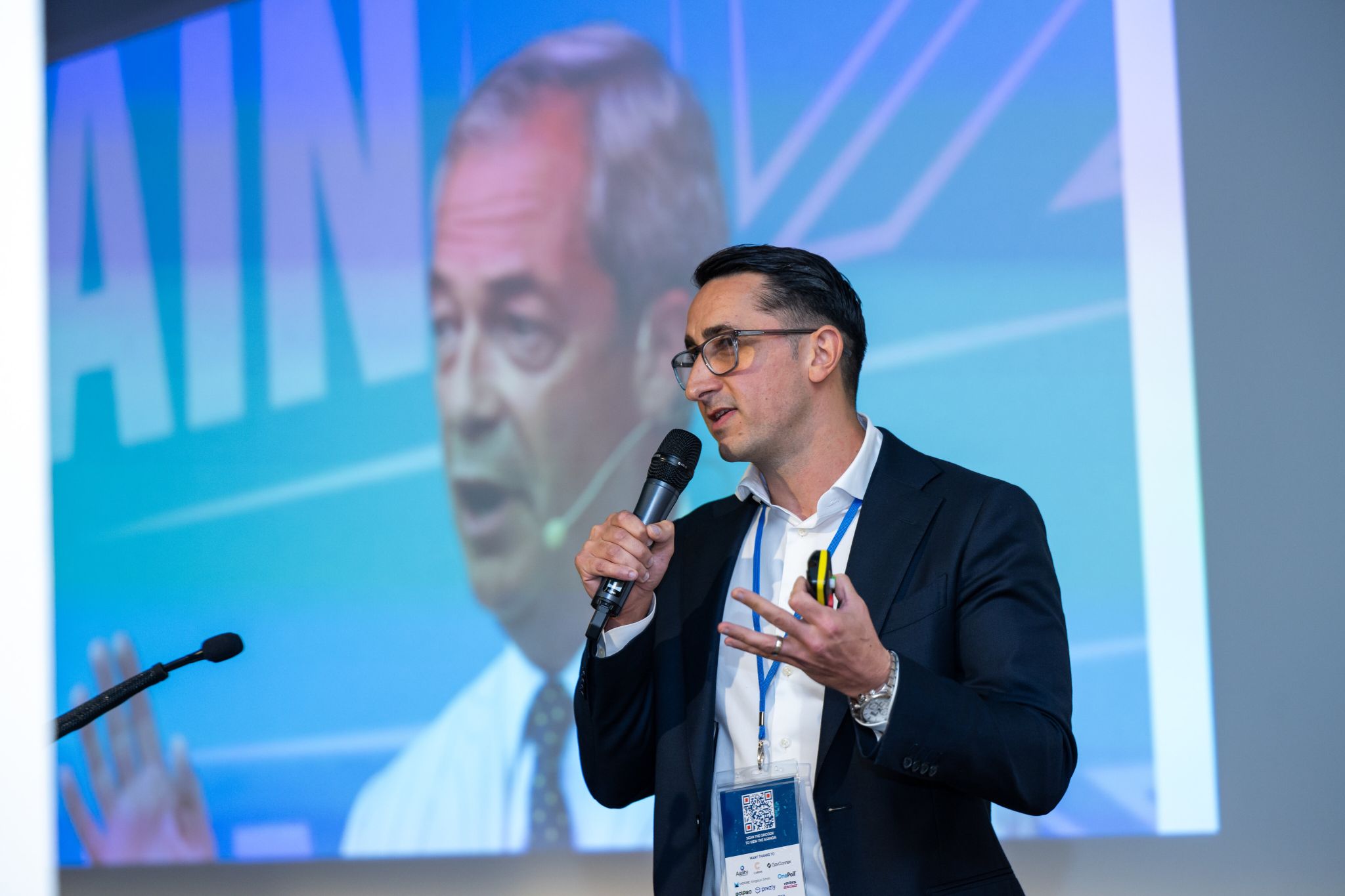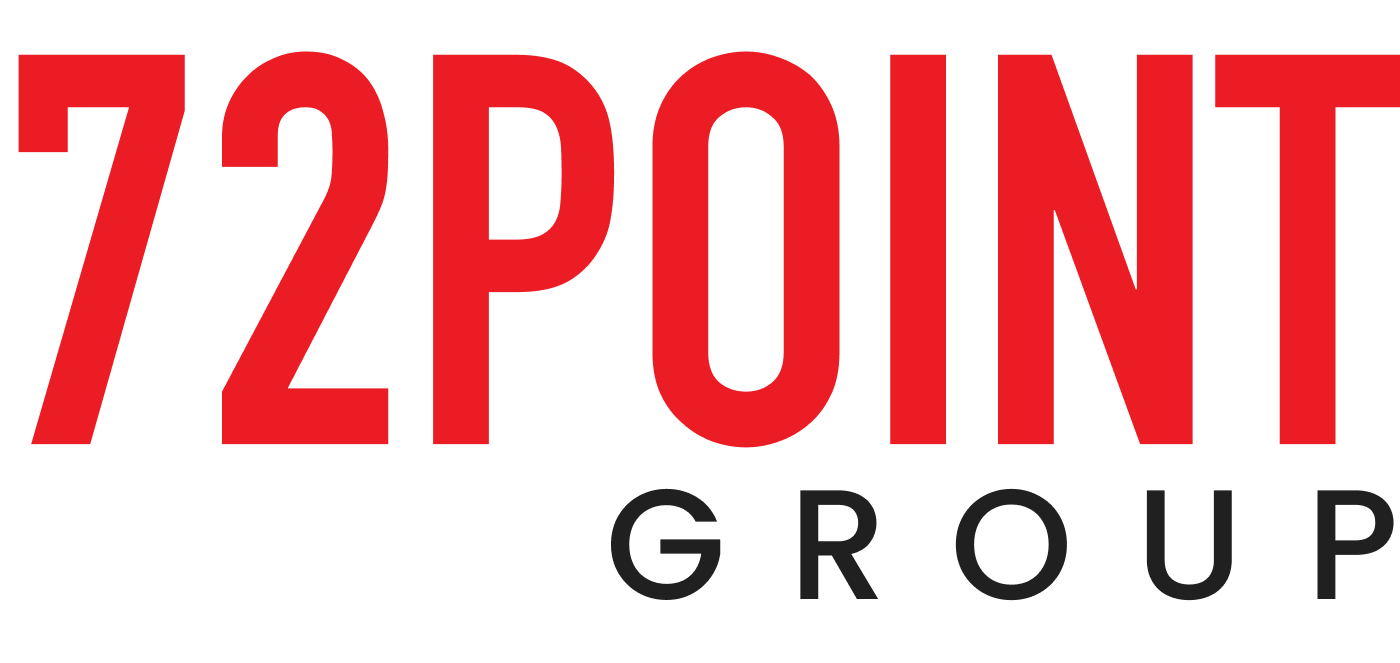Yes, Stay Close To Your Clients, But Also the Media
WPP's Mark Read has issued his take during this 'summer of discontent': "I'd advise clients to stay close to their customer. Stay close to the agency."
I'd go one further than Mark Read and say: "Stay close to the media."
For those that have been here before, you will be aware of the drill. Recession is on the horizon, purse strings are being tightened, and in this industry, we’re re-thinking exactly how important that press release about a new fridge really is.
Recession talk is like a run on the bank. Fear strikes, the chatter gets louder, and before you know it, it’s happened.
‘Reading the room’ is a big part of our remit, more than ever right now. Considering every facet of consumer spending is the universal strategy across every press office.
And the coming few months are going to be challenging in the extreme as we face a crash in consumer confidence.
Deeply depressing for sure, but what do we do about it? And, remember, you’re being paid to promote that new fridge.
The simple truth is this: we must play our part in turning things around.
While marketing must adapt to this new landscape, and adopt an appropriate tonality amid the crisis, the biggest mistake it can make is going quiet.
Consumers will still spend their hard-earned money, but will turn to brands they trust and value.
Publishers are not immune to the downturn. Advertising spend, already damaged by the pandemic, will take a further hit.
The cost of the very paper that print editions are made from has soared. Last November, The Economist quoted one newspaper boss saying: "It's like tasering an elderly person who is already on a pacemaker."
Fewer pages means fewer stories. The move to online will gather apace.
But it is tough to monetise digital news. Those behind paywalls with fare better, but their audiences, by design are niche. The free to air publishers are using a variety of strategies to turn this around, almost all aimed at driving mass audience numbers based on page views and engagement. This presents a huge challenge to PR.
Bleak, right? But these challenges are not insurmountable. Great ideas will always cut through.
The litmus test for every project must be this - would you read it? If you cannot answer that question with a resounding yes, you're on the wrong track.
I am reminded of a conversation I had some years back with a publicist from an agency that shall remain nameless.
Relating that a former colleague of mine on The Sun was receiving 800 press releases daily when they used to receive less than 100, and that, as a result, she had stopped reading any from someone PRs she didn't know, the publicist replied: "But that's her job."
Except it isn't. Journalists do not care what our clients want. They only care about what their readers want.
In these straitened times making our work interesting and relevant isn't enough. We must make it matter.
By Chris Pharo, Managing Director
Why your email media pitches are ignored - Chris Pharo tells all to PRmoment
24 November 2022Uncategorized @en-gb,72Point News,PR Insight
"I'm constantly asked to explain how creating content for wire distribution is different to crafting press releases, and what we mean by page-ready content."
Read Chris Pharo's piece on PRmoment here.
Why Your Brand Needs to Plan Its Christmas & Winter PR Activity Now
11 September 202572Point News,72Point News

By Charlie Biggs-Thomas, Senior Creative Account Manager, 72Point
If you don’t already have your Christmas and winter PR activity mapped out, you could be missing one of the biggest opportunities of the year.
The winter calendar is full of opportunities for storytelling, brand visibility, and connecting with audiences during a busy and emotionally charged season.
But to make the most of this critical period, you need to get ahead of the game. Here’s how to sharpen your seasonal PR strategy.
Step 1: Be Clear on What You Have to Say
Ask yourself: does your brand have something valuable to add to the conversation? If not, it may be better to sit this one out. Forced messaging rarely lands well, and journalists can see through it.
That said, the media is always hungry for expert voices who can contextualise events, trends, or breaking news. If you can authentically provide insights, practical advice, or human-interest angles, you should absolutely be pitching.
The key thing to remember is journalists want real-world stories that show how people are affected, not abstract brand soundbites.
Authenticity is key in the eyes of consumers, so making sure the opportunity you are going after is relevant is crucial in winning over your target audience.
Step 2: Preparation is Everything
Timing can make or break your seasonal activity. Journalists and editors work to tight deadlines, especially around the holidays, so the earlier you prepare, the better.
For example, with the UK’s Autumn Budget arriving in November, you can anticipate likely announcements by reading the papers, following the commentary, and drafting insights ahead of time. By pitching proactively, you position your brand as a go-to resource before the news breaks – which means contacts are more likely to come to you when they’re on deadline.
And when you do pitch? Make it easy. Provide everything a journalist needs upfront – quotes, data, imagery, and supporting context – so it’s effortless for them to include you in their coverage.
Step 3: Take Inspiration From the Landscape
Another trick is to keep your finger on the pulse of what’s already being covered – then think about how your brand can elevate the conversation. Could you add expert analysis, consumer research, or a surprising twist?
The best PR campaigns often come from spotting where the noise is loudest and finding a fresh way to cut through.
Key Dates to Keep on Your Radar
Here’s a snapshot of seasonal events the media will already be planning for – and that your brand could tap into with the right angle.
October
- Coffee Day – 5th
- Diwali – 21st
- Clocks Go Back – 26th
- National Cat Day – 29th
- Halloween – 31st
November
- Bonfire Night – 5th
- Autumn Budget – 26th
- Thanksgiving – 27th
- Black Friday – 28th
December
- Christmas Jumper Day – 11th
- Winter Solstice – 22nd
- Christmas – 25th
- New Year’s Eve – 31st
Final Thoughts
Seasonal PR isn’t about ticking boxes or rushing out half-hearted stories. It’s about making sure your brand is part of the cultural moments your audiences care about – in a way that feels timely, relevant, and valuable.
So, if you haven’t already mapped out your Christmas and winter PR activity, now’s the time. With careful planning, you can not only gain traction for your brand but also secure meaningful media coverage during one of the busiest times of the year.
Why the PR agency model isn’t right for startups
1 August 2019PR Insight,Lisa’s Blogs
PR agency founder Lisa Malyon has spent the last decade providing PR services to startups, spanning all industries from recycling to transport, and childcare to FMCG.
It’s like 28 days later….here in London. Every year I watch more startup zombies, collectively gravitating, arms stretched out in front of them, towards PR agencies, looking for that all-important, business-changing media coverage fix. Naturally, PR agencies welcome said zombies with open arms and promise them the moon on a stick. Why? Agencies have staff to pay and they love a challenge, but the reality is, the agency model, no matter how big or small, is not designed to deliver what a new startup needs.

Startups or founders with little to no PR experience will only ever get 30-50% productivity out of a PR agency, and the reason for this is because a PR agency doesn’t have time to nurture and educate startups. In agency-land time is money. A hard-working press office takes time to deliver results, and every minute the agency staff spend educating their client, they’re not speaking to media, or negotiating that all-important brand collaboration.
Don’t get me wrong, I love PR agencies – I run one, and have done for the last seven years. The work I have seen many agencies do for start-ups is admirable, but let’s create positive change with a little education, to ensure that every startup gets 100% productivity when they hire an agency – it will be more motivating all round, and will mean that investors see the dividends they expect. I am taking a day a week out of agency life to educate startups – I have challenged myself to reach 500 startups before the end of the year.
If startups can learn the PR basics, there will come a time when hiring a PR agency is the best thing they can do – buying in creativity, ideas, talent and resource. Here is my list of the ‘top 5 things a startup must know before hiring an agency’:
- How a press office / media works
- What makes a good PR story
- How to talk about your brand / business
- What PR outcomes will really impact the bottom line
- How to identify PR-able content from within the business
For more information, contact lisa.malyon@72point.com, or visit our Instant Fame Masterclass workshop page.
Why PR Needs To Be A Valuable Part of Your 2018 Marketing Strategy
19 March 2018PR Insight,Just Saying,PR,Marketing
The beauty of PR as a 21st century marketing tool is that it has evolved into an all-encompassing method of communication. Few, if any, comms methods in a modern marketer’s tool kit could claim to meet SEO, social media and brand exposure KPIs in one fell swoop, but thanks to the nature of the digital market that is precisely what PR can achieve.
In an age where content is king, creating stories and empowering storytellers has given brands oxygen on the web to stand out where others get swallowed up. Little surprise, therefore, that 77 per
cent of exhibitors at this year’s Prolific North Live carried out PR campaigns in 2017 and 92 per cent look to do it in 2018 as well.
But there are objections to utilising PR tactics among the marketing community, namely because confusion exists over how to implement a successful PR plan.
 And who can blame them? The market today is extremely crowded, which means the ability to stand out is becoming increasingly difficult. PR can return a bounty of positive business benefits, but only if campaigns are orchestrated successfully, which returns me to my initial point.The art of PR is about creating stories and empowering storytellers. Whether it be journalists, bloggers, vloggers or social media influencers, having a good story at the heart of your campaign is key to its success, and so a PR plan should always start with idea generation and stress testing.
And who can blame them? The market today is extremely crowded, which means the ability to stand out is becoming increasingly difficult. PR can return a bounty of positive business benefits, but only if campaigns are orchestrated successfully, which returns me to my initial point.The art of PR is about creating stories and empowering storytellers. Whether it be journalists, bloggers, vloggers or social media influencers, having a good story at the heart of your campaign is key to its success, and so a PR plan should always start with idea generation and stress testing.
Although journalists and other media professionals aren’t always on hand to judge a story before it has been created, plenty of agencies do have current or former hacks on their books, so seek them out and run your ideas by them before you get underway. After all, overcoming the first hurdle early on will ensure you don’t run into any bumps further down the line. Then, make sure you develop the campaign with a holistic approach across all platforms and channels. Ask whether there is a natural linking structure to satisfy SEO objectives, whether the content is optimised for online media and social media and that it is sharable.
Crucially, make sure you have an effective means of distributing the story beyond your established circles by assessing how to make a big splash in the media and ways in which to infiltrate social media audiences that aren’t currently in touch with your brand. With over nine in ten companies set to roll out PR campaigns this year, the reality is that PR is not something you can afford not to do.
72Point secures media exposure for your brand across digital and traditional media. We create, distribute, and land PR and branded news stories in massmedia publications including Daily Mail, The Mirror, The Sun, Daily Telegraph and Metro as well as mass-readership news sites such as The Independent and UNILAD. Content. Covered.
This blog was written as part of 72Point’s presentation at Prolific North Live 2018 as part of their Digital Keynote Theatre – click here to view video highlights from the event
[simple-author-box]
Why Earned Media Matters More Than Ever in the Age of LLMs

There’s been a quiet but seismic shift in how audiences are discovering content and it’s one every comms professional, strategist and marketer needs to understand. With the rapid rollout of Large Language Models (LLMs) in search, the internet is being reorganised around trust.
These new systems are fundamentally changing how information is found and surfaced. And they’re rewriting the rules of brand visibility in the process.
The rise of LLM-powered discovery
In the old search world, if you wanted to be seen, you had to play the SEO game - optimise for keywords, rank high, and win the click. But LLMs like ChatGPT, Perplexity and Google’s AI Overviews don’t serve up ten blue links. They generate answers, pulling content from across the web, distilling it, and delivering it in one seamless response.
So what gets referenced? Not the loudest brand. Not necessarily the brand with the most paid placements or the highest ad spend.
It’s the brand that’s trusted. The one cited in news stories, mentioned by credible sources, and surrounded by signals of authority. That’s where earned media suddenly jumps from a comms goal to a central discovery strategy.
Earned media is now training data
At its core, an LLM is only as good as the data it learns from. And some of the most authoritative, high-signal data online comes from journalism. News content is timely, fact-checked, and subject to editorial oversight. That makes it exactly the kind of source LLMs prefer when deciding what to reference.
If your story has run in a national paper, been covered by a regional site with high E-E-A-T (experience, expertise, authoritativeness and trustworthiness), or generated links and social engagement - there’s a much greater chance it will appear in an LLM’s response. In effect, it becomes part of the next layer of the internet’s collective knowledge.
We’re entering an era where earned visibility feeds machine visibility.
Implications for brand strategy
This shift has big consequences for how brands show up in the world:
- Authority is no longer optional. To be referenced by LLMs, brands must have signals of legitimacy across trusted third-party sources.
- PR becomes part of the SEO ecosystem. Creative campaigns that generate media coverage now directly contribute to your brand’s discoverability in AI-led search.
- Content needs to be newsworthy, not just optimised. The bar is higher. LLMs are trained to distinguish between genuine stories and branded puff pieces.
- Search becomes storytelling. We’re moving from keyword stuffing to strategic storytelling. What you say and where it’s said now shapes how machines understand and surface your brand.
What we’re doing at 72Point
At 72Point, we’ve always believed in earned content as a force multiplier for brands. But in this new search environment, its value only grows. We’re helping brands not just land media coverage - but create content that’s designed to build trust, engage audiences, and be recognised as credible by both people and platforms.
That means focusing on stories that resonate emotionally, socially and editorially because these are the signals LLMs are learning from.
It also means making strategic distribution decisions: partnering with high-authority news brands, ensuring relevance to real-world conversations, and using our insight tools to identify what’s cutting through in a noisy media landscape.
Final thought
The race isn’t to be everywhere. It’s to be credible in the places that count.
In the LLM era, earned media is no longer just a nice-to-have for awareness - it’s the foundation of being discoverable, trustworthy, and top-of-mind when audiences go looking.
And if we want to show up in tomorrow’s answers, we need to be in today’s headlines.
Why Do So Many PRs Look The Same?
By Geo Craig
Mixed-race, 21 year old, former aspiring footballer who left the education system aged 16 and with no A-levels or uni degree to his name. Not exactly the archetypal platform from which to launch a PR career at a top consumer agency - but why is this the case? In an industry where our job is to get under the skin of brands and what makes their customers tick, why do so many PRs look, dress, speak and think in the exact same way? Surely that can only breed ideas that speak to a certain market of individuals, and if fame, vast exposure and virality is the benchmark here then there should be as much cultural representation in every brainstorm as possible.
I’m not going to lie and say it’s easy working in an industry where so few at board level, or even senior positions, look and speak like me. It’s immediately noticeable whenever something remotely ‘urban’ comes up in storm, and heads turn towards me. This will be a familiar feeling for any creative who looks even partially ethnic. Why do we have to be the sole torch bearers of inclusion, why can’t there just be a general attitude shift across the board? It’s time now for a recruitment strategy that actively seeks out those with unorthodox backgrounds, recognising the possibilities having a truly diverse team would open up.
The truth is, brands have arguably the biggest part to play in the issue of diversity, as they have the audience and platform to send out the right messages. They need to start understanding that just installing Common as a face of a campaign, or, worse still, getting Kendall Jener to open a can of Pepsi, does not constitute a ‘diversity campaign’. It just feels like an after-thought and is clearly the brainchild of a meeting that contained not one person who represented the audience they were trying to reach. It’s just simply not real enough, and if anything, it deters BAME candidates from a career in advertising and PR - why would they want to take part in an industry that more often than not, clumsily botches it’s job of engaging with them?
So, more diversity in teams will naturally result in a more wide-reaching and considered suite of ideas. Great. But what benefit does having an ‘unconventional’ mentality have on personal working experiences?
My own unorthodox PR background has, in fact, been my biggest strength early on in my career. It has allowed me to see industry with a fresh mind, chat to various experts around me and quickly pick-up skills. Diversity fosters an environment of constant learning, where no 2 team-members experience is the same, and where creativity is constantly tried and tested amongst a wider sample group of society. If you can constantly challenge your team to learn on-the-job, not only about industry, but also different cultures, then surely as an employer, you are fulfilling your duty to provide staff with the opportunity to grow. [/vc_column_text][/vc_column][/vc_row]
Why Diversity, Equity and Inclusion Must Stay at the Heart of PR
19 September 202572Point News,72Point News

At the recent PRCA UK Conference, Koray Camgöz, Chief Executive of the Taylor Bennett Foundation, delivered a powerful reminder of why inclusion isn’t just a moral imperative, it’s a business-critical one.
He opened with a striking example. A university lecturer helping international PR students apply for placements discovered none were receiving responses. When the students changed their names to more Western-sounding ones, nearly all received replies, and many were invited to interview. It was a clear demonstration of the unconscious (and sometimes blatant) bias that continues to shape opportunities in communications.
For Koray, names matter. They carry history, pride, and identity. His own Turkish surname, complete with the two dots above the “O” that he once avoided using, has become something he now embraces and insists on spelling correctly. It’s a reminder that our industry must recognise and respect difference, because identity is never something to erase.
Diversity: The Business Case
Inclusion conversations are often mischaracterised as “political” or “culture war” issues, but Korey was unequivocal: this is about performance. Research shows that companies in the top quartile for ethnic diversity are 37% more likely to outperform competitors. Diverse teams make better decisions, improve productivity, and strengthen retention.
He illustrated this with his time at Ketchum, where he worked alongside creative director Indy Selvarajah and his diverse team. For Indy, diversity didn’t just improve creativity, it defined it. The fusion of perspectives became the “secret sauce” that powered award-winning work.
The flipside is just as telling. Tesco’s Eid Mubarak range once included smoky bacon Pringles, and Samsung released an ad showing a woman running carefree through London at 2am, in the wake of tragic, high-profile murders. Both examples sparked public backlash and highlighted what can happen when the people making decisions all come from similar backgrounds.
Where PR Stands Today
Our industry still has a long way to go. Nine in ten communications professionals identify as white. Around 28% are privately educated - four times the national average. And because success in PR often comes down to networks rather than qualifications, the playing field remains far from level.
But Koray was clear: the way forward isn’t about abstract ideals, it’s about practical steps.
- Start with data. Who’s getting promoted? Who’s leaving? What do exit interviews reveal?
- Observe your culture. Who’s dominating meetings? Whose voices are missing from decision-making?
- Set goals. Link inclusion directly to business objectives and keep them alive by talking about them at every level.
- Seek help. Grassroots organisations such as the Black Comms Network, Asian Communications Network, People Like Us, and the Taylor Bennett Foundation exist to support employers on this journey.
The Taylor Bennett Foundation in Action
The Taylor Bennett Foundation has spent 17 years creating opportunities for Black, Asian and ethnically diverse professionals in PR. Its flagship PR Training Programme has a 97% employment success rate, while initiatives like Summer Stars internships and Reverse Mentoring pairings are reshaping the industry from entry-level to leadership.
Koray closed with the story of Suleika Mahamud, a trainee whose candid account of her family’s experience with polio during a Gates Foundation masterclass eventually led to her speaking on a panel in Brussels alongside Bill Gates himself. One opportunity changed her career trajectory - and that, Korey said, is exactly what true inclusion makes possible.
A Call to Action
At 72Point, we know PR thrives on fresh perspectives, creativity, and cultural understanding. As Koray reminded us, inclusion isn’t about “special treatment” - it’s about recognising that opportunities are not evenly distributed and working actively to close the gap.
The challenge is real, but so is the opportunity. By embedding equity and inclusion into our industry’s DNA, we don’t just create fairer workplaces, we create better, braver, and more effective communications.
We are proud to be supporting The Taylor Bennett Foundation’s PR Cup initiative, raising money for their vital work in opening up opportunities and championing diversity and inclusion in our industry.
Why Content-Lead PR is Essential in 2023 - Sam Brown & PRCA
27 February 2024Uncategorized @en-gb
We’ve teamed up with the PRCA to host a hands-on training session on how to create a content-led PR campaign. It’s taking place on 30th of March remotely.
"It will be a fun, interactive and engaging couple of hours, where you’ll learn lots of great tips to take back to your workplace." - Sam Brown
The session is hosted by our crack-team of PR supremos – Sam Brown, award-winning Creative Director with over 20 years of experience working with the world’s leading brands; Katie Earlam, Campaigns Director and former news and showbiz journalist and columnist at The Sun and interviews producer at Sky News with an unrivalled contacts book; and Emma Elsworthy, Head of News Generation, who has been working with leading brands and agencies to supply stories that power the media agenda – with expert knowledge of what lands and what doesn’t - for over 20 years.
To find out more about how to curate content-led PR campaigns that drive brand impact, join our training course with the PRCA here. Or if you want to find out more about what why content-lead PR is essential in 2023 click here.
Why a strong content base should be part of your marketing strategy
19 April 2018PR Insight,Just Saying,Marketing
Traditional marketing is becoming less effective by the day. Instead of simply pitching your services and products to potential clients, the way to achieve vital cut-through now is to provide them with truly relevant and useful content that gives them actionable insight.
The Content Marketing Institute’s annual research reveals that the vast majority of marketers are including content marketing as part of their strategy. They state that there are three key benefits for any enterprise that utilises content marketing, which include increased sales, cost savings and better customers who have more loyalty.
These are absolute no-brainers as to why content marketing should be a key aspect of your strategy. At the end of the day, marketing is impossible without quality, engaging content, so if you devise a strong content base to your overarching strategy then all aspects will greatly benefit.
Social Media, SEO, PR, PPC and inbound marketing are just some of the strategies that can be boosted by utilising clever content marketing. Using a diverse range of rich media serves to keep your customers engaged and grabs their attention instantly.
Infographics, videos, embeddable quizzes, animations and images are all methods in which you can provide customers with relevant high-quality content that can improve their loyalty to you and boost your brand exposure.
Here at 72Point, our in-house design team provide a comprehensive content marketing offering.

We worked in collaboration with Freuds on their social campaign for NHS England, putting together a number of assets including several animated GIF’s, static graphics and a short animation. This provided NHS with great content that was posted across their Twitter channels, and by various other health organisations - raising awareness of the services available via NHS111 and delivering the key messaging of their campaign in a creative way.
The team also crafted an animation for The Department of Culture, Media and Sport as part of their ‘free wifi’ campaign, which saw over 1,000 public buildings in cities across the UK transformed into free wifi hotspots, supporting their larger #BuildingBritain campaign. The package included a 45 second animation and a GIF of the final sequence. As well as this, we supported the campaign by providing social media graphics to be used by public organisations, raising awareness of the campaign.
Our infographics are divided into five different pieces, meaning that they can be posted out at different times across different social channels, providing clients with plenty of longevity on their campaigns, whilst our animations are perfectly tailored for social in length and design.
Whether you are looking for a high-quality social project to maximise your brand exposure (take a look at our breakthrough package here), or a clever piece of visual content to embed on your website or post across your social channels, 72Point should be your one-stop shop for all content marketing needs.







